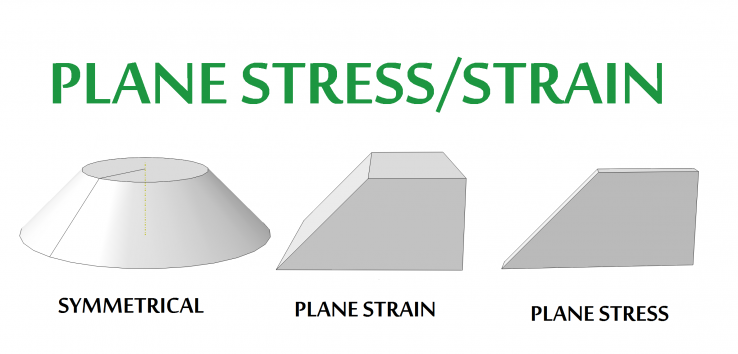What is plane stress, plain strain, asymmetry?
What is plane stress, plane strain, asymmetry?
Obviously, gaining insight before start modeling can be highly profitable in order to boast the precision and reduce the computational expenses. In this article, three main simplification concepts have been introduced.
Plane stress assumption: an element is called to be under plane stress condition if the stress vector is zero across a particular surface. If all elements of a thin structure are at this condition stress vector is zero across a particular surface of the whole structure. As a result the stress analysis can be significantly simplified. For example in this thin slice of apple, the Z component of the stress is zero throughout the model. Actually Plane stress occurs in thin flat plates that are subjected to loading that are parallel to them.
Plane strain assumption: plane strain, is often applicable to members with extreme thickness such as embankment dams. If one dimension is way larger than others, its principal strain can be assumed as zero, which means the problem can be simplified under plane strain condition.
Symmetry is when the numerical model can be created by revolving a cross section of the problem. Bear in mind, to use symmetry technic, in addition to the geometry, the loading must be also symmetrical. Taking advantage of symmetry can significantly reduce the computational expenses.



Comments